Has London entered a pizza-naissance?
Neapolitan roots, New York swagger, London soul

For anyone who grew up in Britain before the 2010s, going out for a pizza was a binary choice: a chain like Pizza Express for somewhere reassuringly (if boringly) familiar, or a local Italian for something more personal. Somewhere, perhaps, like Olivelli on Store Street in London’s Bloomsbury, which reputedly became the first place in Britain to sell pizza when it put a Margherita on the menu in 1934.
Enter the ‘pizzaissance’

The Margherita was invented in 1889 to commemorate the visit of Queen Margherita to Naples. But it is the world’s other most famous pizza city, which has recently led to a pizza boom in London: New York. Gerry del Guercio, who, with Paul Delany, runs the Bite Twice Instagram account reviewing pizzas across the capital, credits Tom Vincent with introducing authentic American-style pizza to the UK when he brought New York pies to Vincenzo’s in Bushey, Hertfordshire, in 2022. After trialling over 1,000 pizzas, the Bite Twice boys have opened their own homage to East Coast pizzerias, Carmela’s, in Islington.
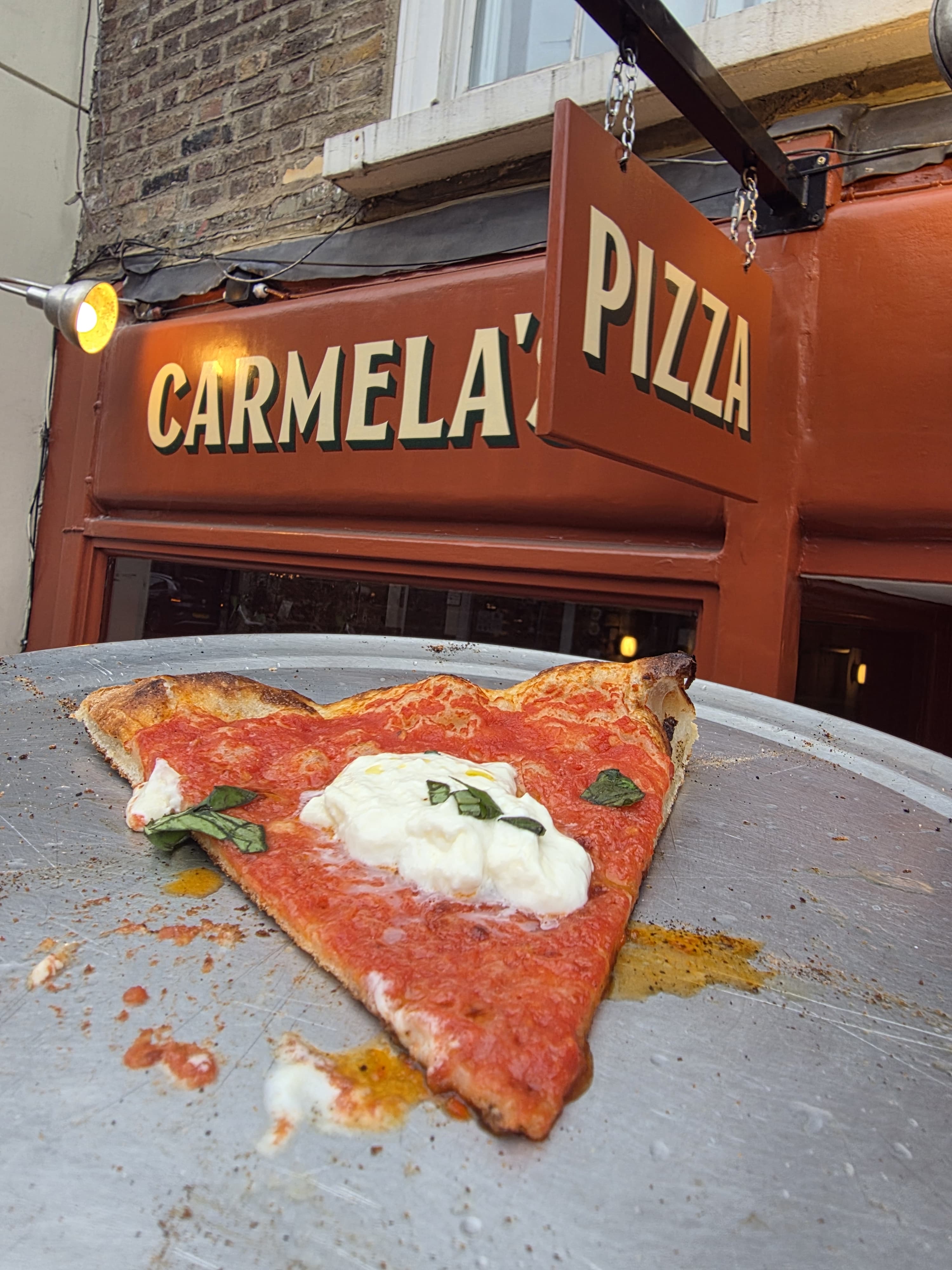
The small space evokes a mid-century Midtown bar crossed with a Little Italy pizzeria, featuring Tala pendants, brass lighting, and walls saturated in Yes Chef paint, an earthy red that transforms from burnt pink by day to moody crimson in the low light of evening. Crisp-yet-foldable 13-inch pies with classic toppings like fennel sausage and pepperoni are complemented by cocktails and Italian wines.
Like many of the newcomers del Guercio reviews on Bite Twice, Carmela’s is East Coast Americana refracted through a London lens. ‘In the past, London only replicated very literal versions of other pizzas,’ he explains. ‘What we are seeing now is London developing its own distinctive pizza culture.’
‘In the past, London only replicated very literal versions of other pizzas. What we are seeing now is London developing its own distinctive pizza culture.’
Gerry del Guercio, Bite Twice
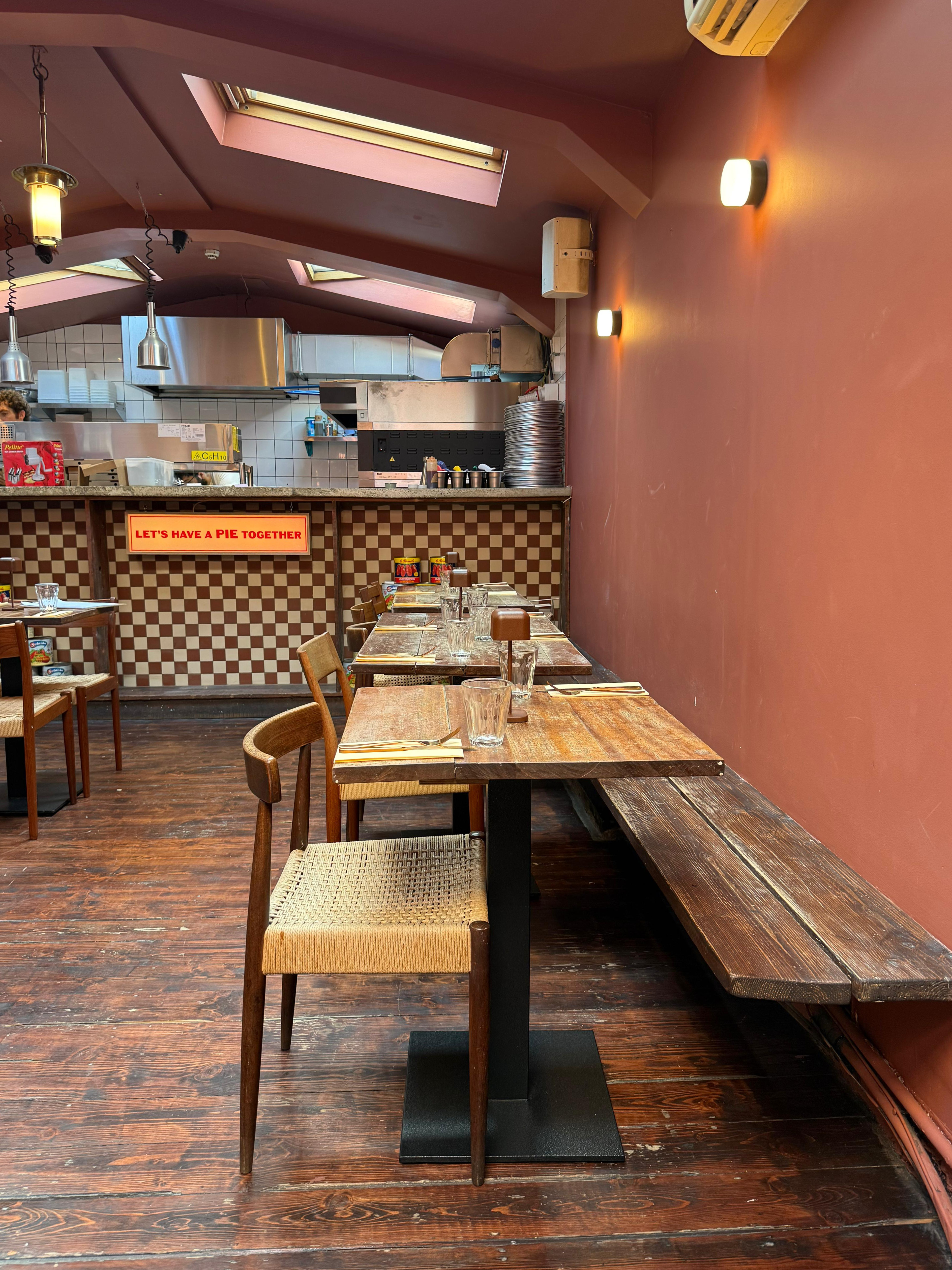
The transformation has been built upon a Neapolitan foundation first laid by the original Franco Manca in Brixton Market, which opened in 2008. ‘Franco Manca was really fresh and exciting,’ del Guercio recalls. ‘The pizza was phenomenal.’ Yet as the brand expanded and focused on low prices, it shaped public perception of pizza as something cheap. ‘That devalued what a pizza was in the eyes of the public for a long time,’ del Guercio notes. Now, though, a new generation of pizza makers is elevating both quality and perception.
Chef Tom Kemble spent 20 years in Michelin-starred kitchens such as Hedone and Fäviken before pivoting to pizza. ‘Operating Michelin-starred restaurants has become increasingly challenging,’ he explains, citing rising costs and food inflation. ‘It’s become almost impossible to offer the customer the spirit of generosity that I would like when cooking at that level.’ Pizza, in contrast, offers the sort of accessibility and immediacy that would be unthinkable with a tasting menu.
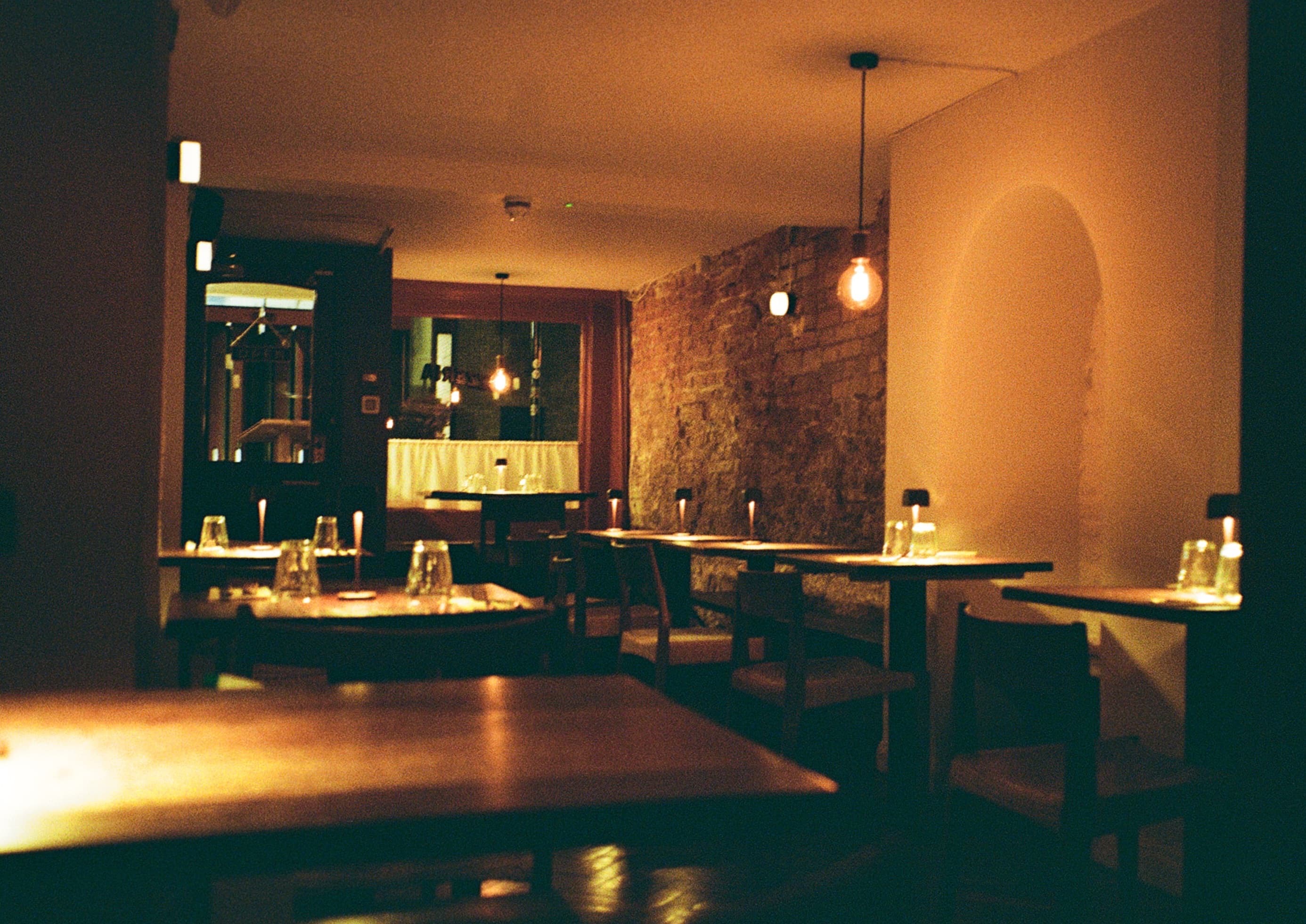
Kemble launched Spring Street Pizza in April 2025. The restaurant is named after the Manhattan thoroughfare where Lombardi’s, New York’s first pizzeria, opened in 1905. Functionality, not fine dining, has driven Kemble’s design ethos. ‘I didn’t want anything that felt too polished,’ the chef says. ‘It had to be practical, because 18-inch pizzas take up a lot of space to prep, cook and eat.’ But he still maintains the high standards he learned in high-end kitchens. ‘I source with the same rigour and demand for quality. I celebrate seasonality and pursue continuous improvement.’
Receive our daily digest of inspiration, escapism and design stories from around the world direct to your inbox.
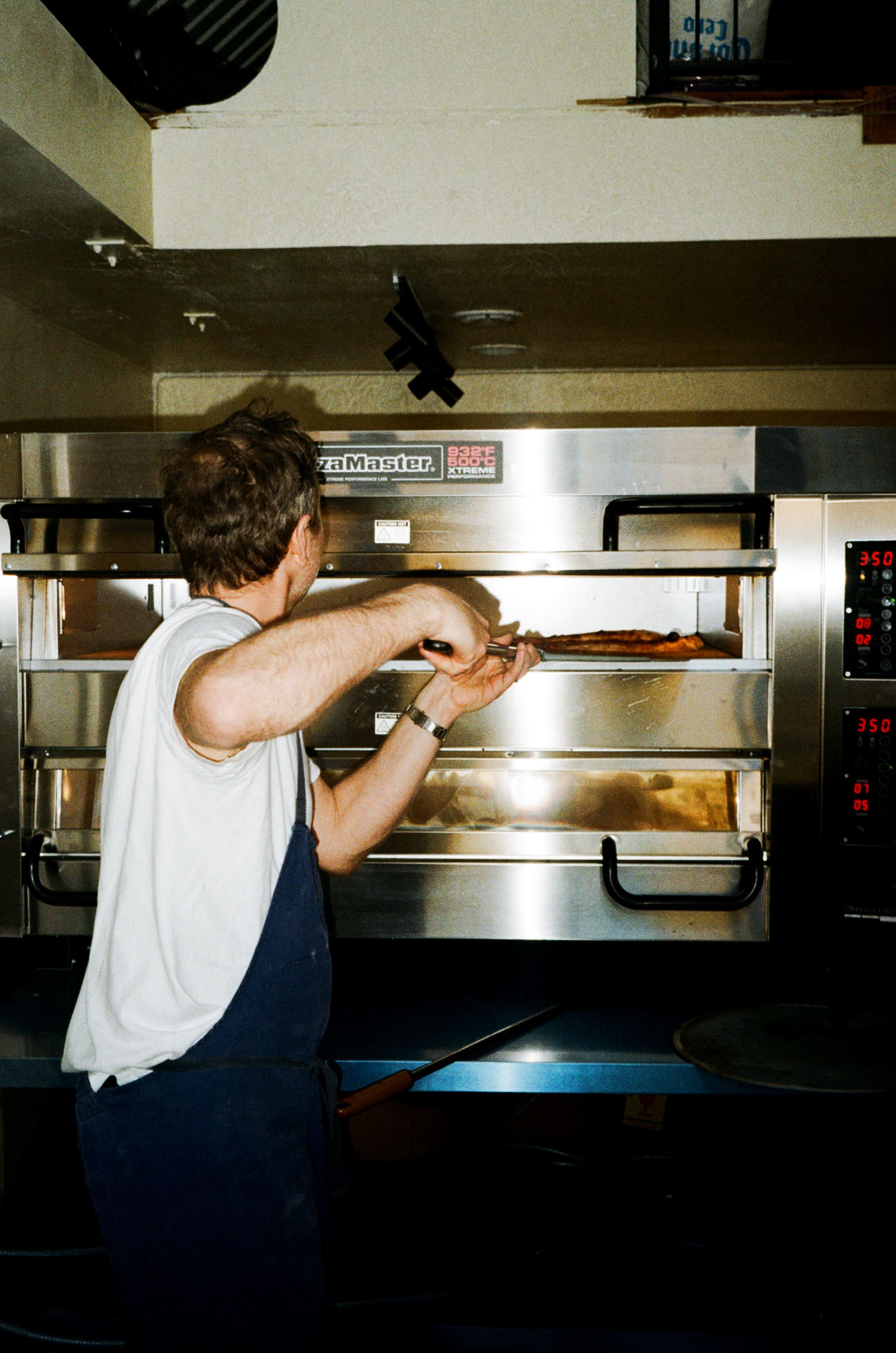
Pizza’s potential for delivering crowd-pleasing quality is driving innovation in unlikely places. Carl McCluskey grew up around his family’s Hammersmith pub, The Chancellors, where he watched the drinks trade dying but lacked the space to go full-on gastropub. ‘We did toasties and that was about it,’ he says. ‘We needed a food operation small enough for our tiny kitchen.’
His solution came through discovering Mark Iacono on Instagram, the chef who turned Lucali in Brooklyn into a social media sensation and, like McCluskey, had never cooked pizza professionally before launching his business.
When Crisp Pizza at The Chancellors debuted post-pandemic with pepperoni, nduja and mushroom pies, McCluskey’s ambition was ‘to sell 150 pizzas a day. We were way past that straightaway.’ The secret of his success is a signature style of pizza he calls ‘New York method, Neapolitan ingredients.’ Where traditional Neapolitan dough uses only minimal salt, New York-style incorporates additional salt, plus sugar and oil. ‘I wanted to balance looking like a Neapolitan pizza with charred blisters and bubbles, but having that stronger New York hold and crispier base.’
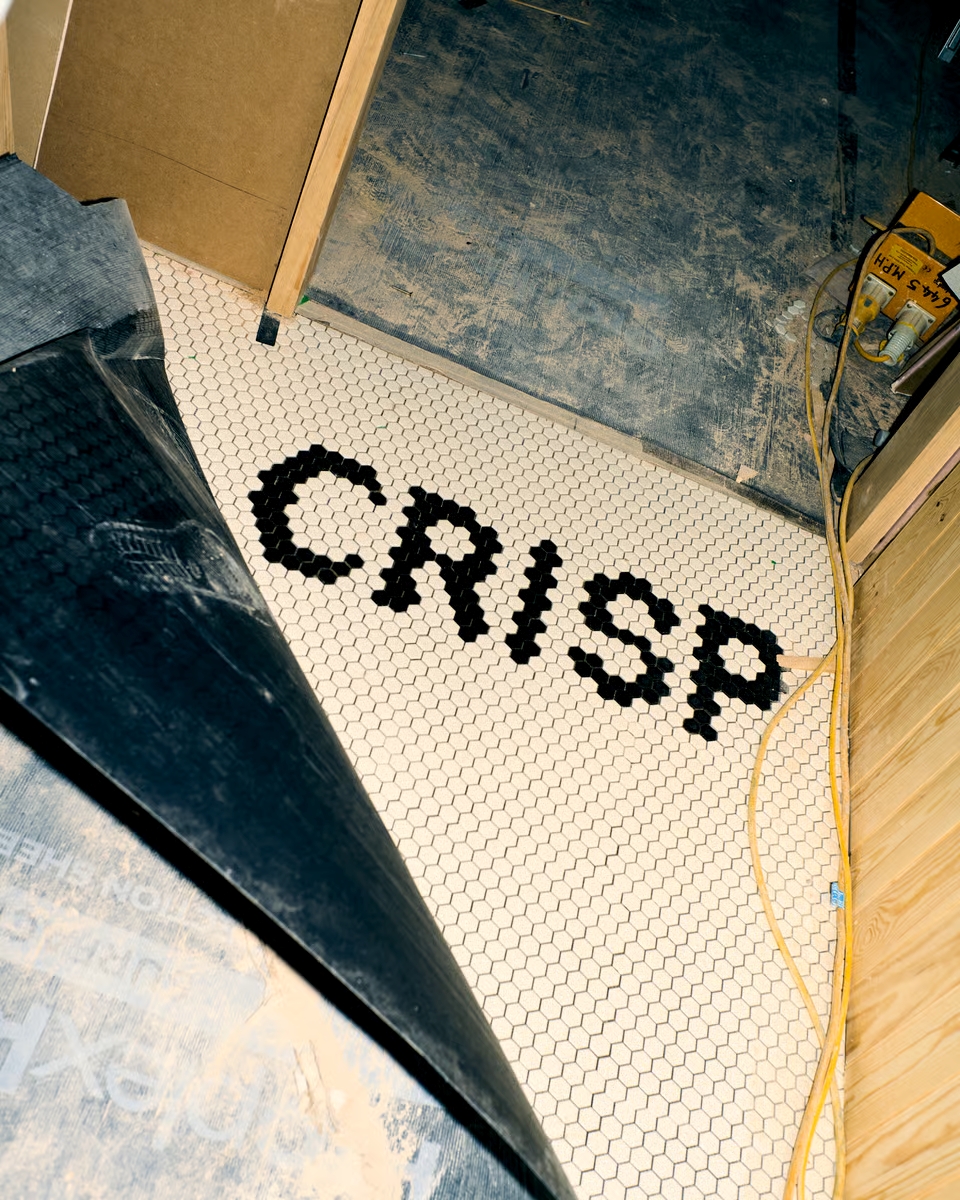
This month (November 2025) sees Crisp relocate to The Marlborough in Mayfair, a Grade II-listed pub a stone’s throw from Selfridges – a site ‘every operator in London wanted,’ says McCluskey, who is opening in collaboration with the team behind The Devonshire. He describes the look as ‘Victorian movie set,’ with the ground floor maintaining traditional British pub aesthetics while the basement houses an ‘ode to New York.’
While McCluskey was reimagining pub spaces, Francesco Macri was pursuing a different approach with Alley Cats: first in Marylebone, then in Chelsea and now its latest pizzeria in Notting Hill. Once again, America is the inspiration – ‘the pizza scene in the US has always felt like it was operating on another level compared to London,’ says Macri, who is head chef of Alley Cats – but executed in a way that doesn’t feel like a pastiche. ‘We’ve done very little in terms of design. We wanted our restaurants to feel stripped-back and welcoming, with the focus firmly on the pizza.’

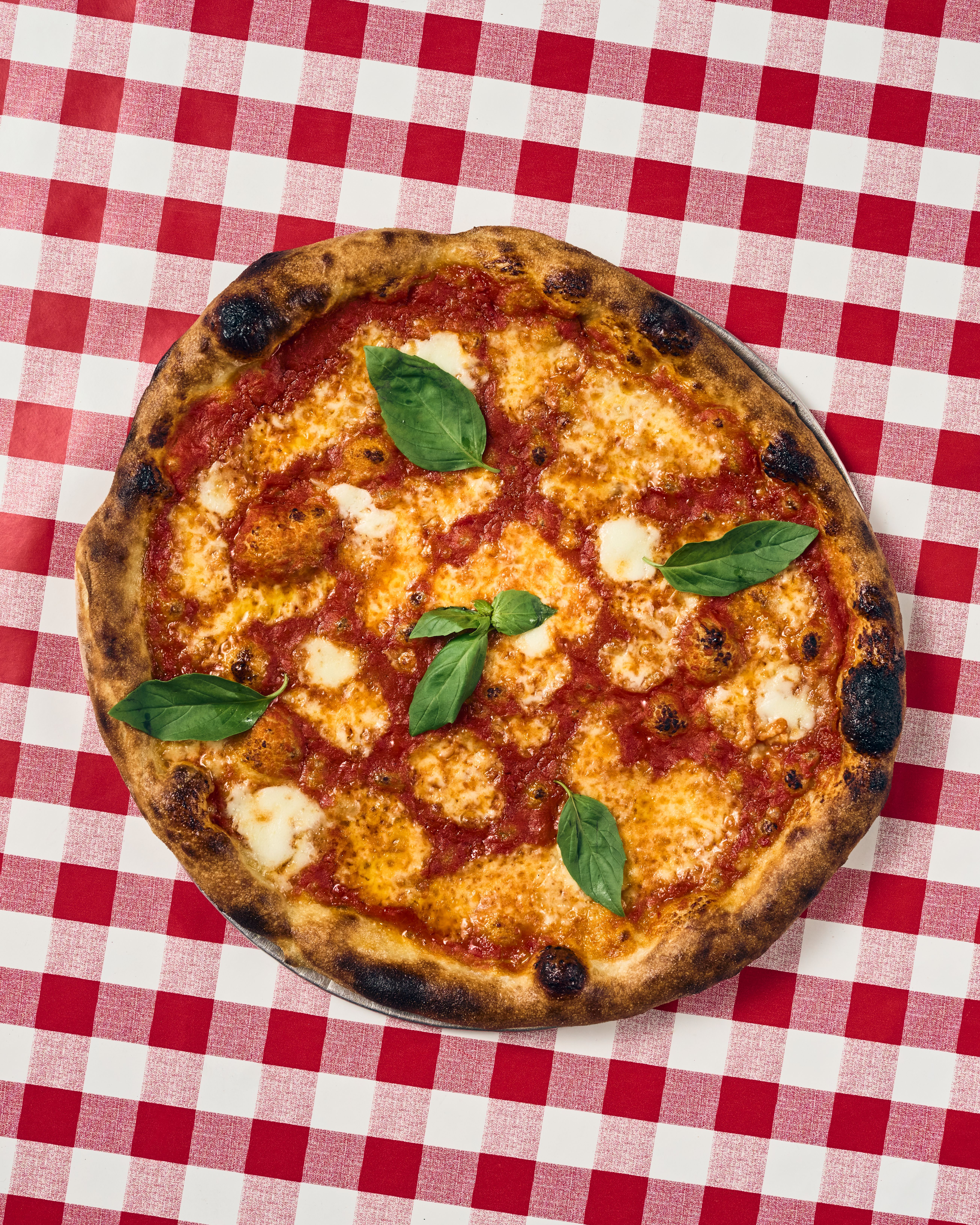
This anti-design philosophy has created its own visual language. ‘Certain elements have become part of our identity: the church pews, glazed tiles, gingham tablecloths and even the projector playing classic films on the wall.’ But how can Alley Cats maintain a sense of originality as the group expands? ‘It’s about keeping each site individual,’ Macri says. ‘We don’t want to replicate a cookie-cutter model, though we know public perception can shift once you have multiple sites. The goal is to share Alley Cats pizza with as many people as possible, but to do that sustainably – by choosing locations carefully and growing at a pace that allows the product to stand the test of time.’
American might be the ascendant style on London’s pizza scene, but it’s not all over for Italian, though individuality remains an equally essential ingredient. Bechara Aoun chose to focus on Roman pizza when he opened Marta in Chelsea at the end of 2024. ‘Roman pizza is stretched with a rolling pin and is larger, crisper and baked for longer than Neapolitan pizza,’ Aoun explains. ‘I like to think it’s lighter and more refined, but our goal isn’t to replace Neapolitan pizza in London. We want to remind people that Italy has other rich traditions that are just as deserving.’
I like to think Roman pizza is lighter and more refined than Neapolitan. We want to remind people that Italy has other rich traditions that are just as deserving
Bechara Aoun, Marta
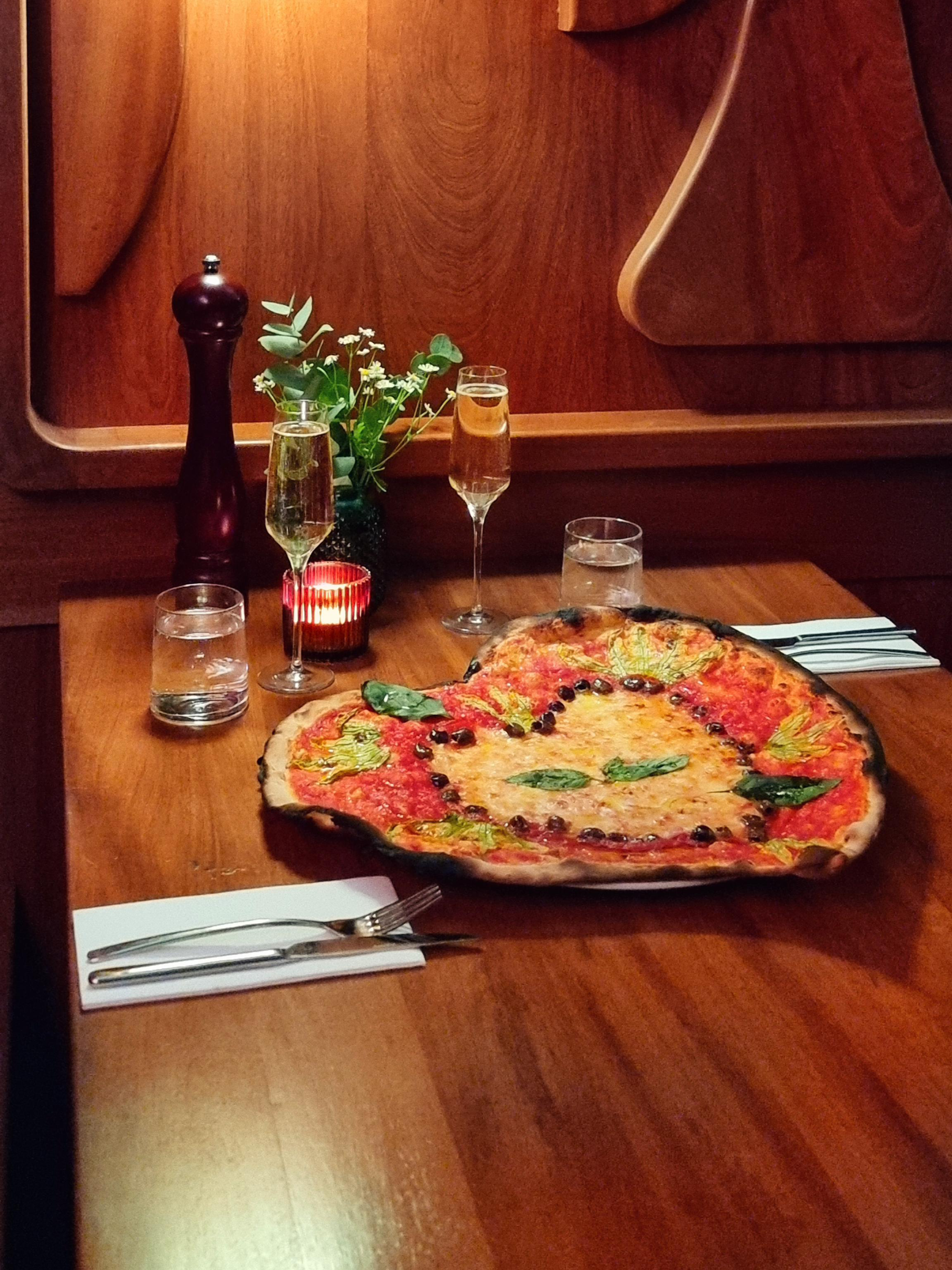
His design philosophy mirrors this artisanal approach, both at Marta and Martina, his new Fulham restaurant. ‘Martina mixes mid-century and contemporary design: terracotta tones and a big communal table make it playful and casual,’ Aoun says. ‘Marta feels like it belongs to another era: all hand-crafted solid wood, a travertine bar and the wood-fired oven as its hearth. In both places, the goal was the same: to restore that sense of eating somewhere that feels alive, where the design, the food, the wine and the service all connect.’
Broadening British tastes beyond Neapolitan isn’t the only shift in London’s pizza culture. ‘In New York,’ says Henry Hill, ‘slices you grab on the move are part of everyday life – fast, cheap, delicious and fun.’ Now Hill is introducing Londoners to slice culture at the first permanent site for Bad Boy Pizza Society, which opened in Bethnal Green in August.
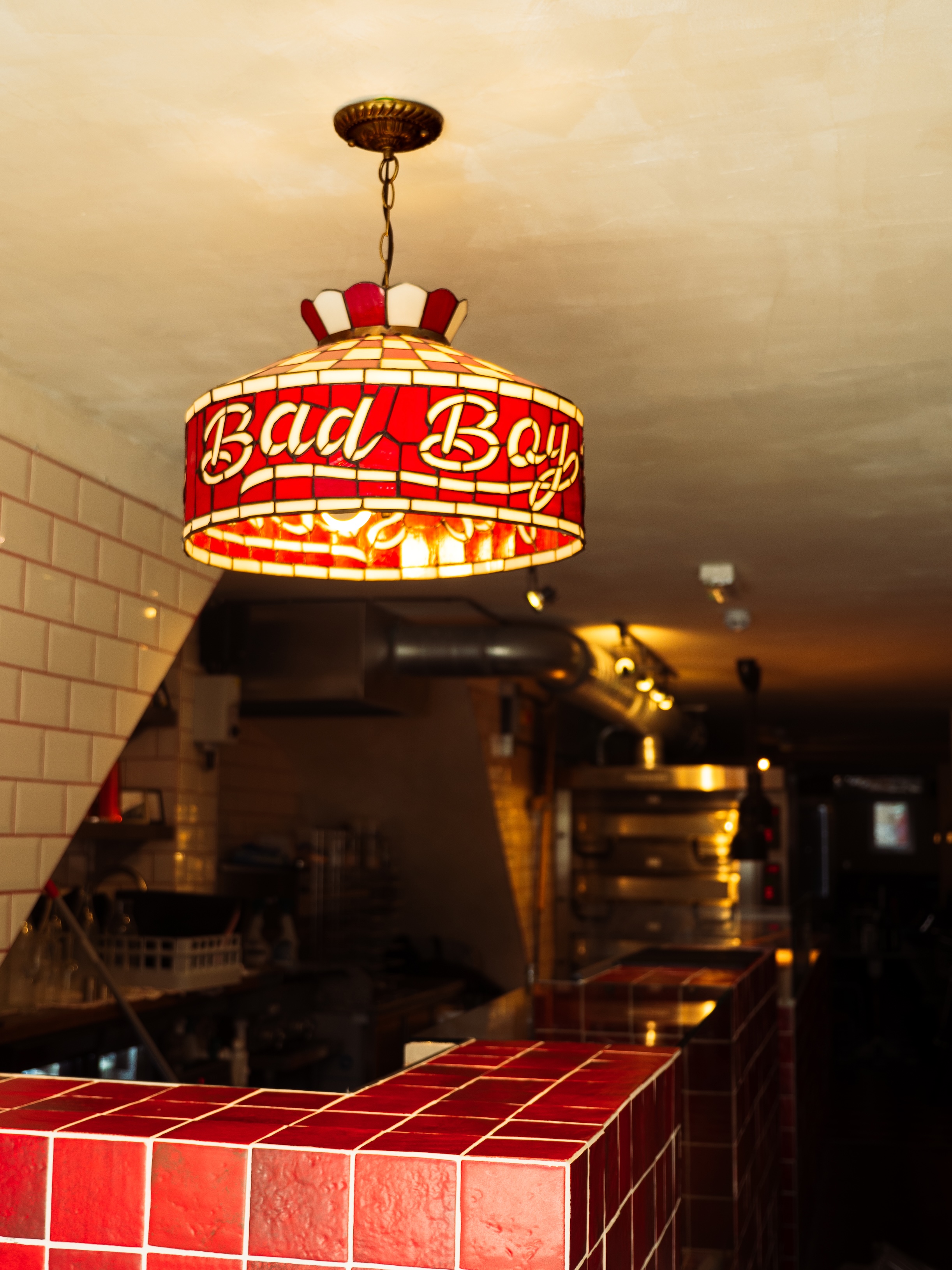

Hill describes his new venture as ‘like a Brooklyn pizzeria collided with an old-school English pub. The front has that industrial grab-a-slice energy, while the back is dimly lit and built for table service and hanging out.’ Bad Boy serves 18-inch pizzas cut into foldable slices, and Hill believes the pace of life in the capital supports slice culture: ‘London has a similar energy to New York, so there’s no reason slices can’t catch on here.’
London has a similar energy to New York, so there’s no reason slices can’t catch on here.
Henry Hill, Bad Boy Pizza Society
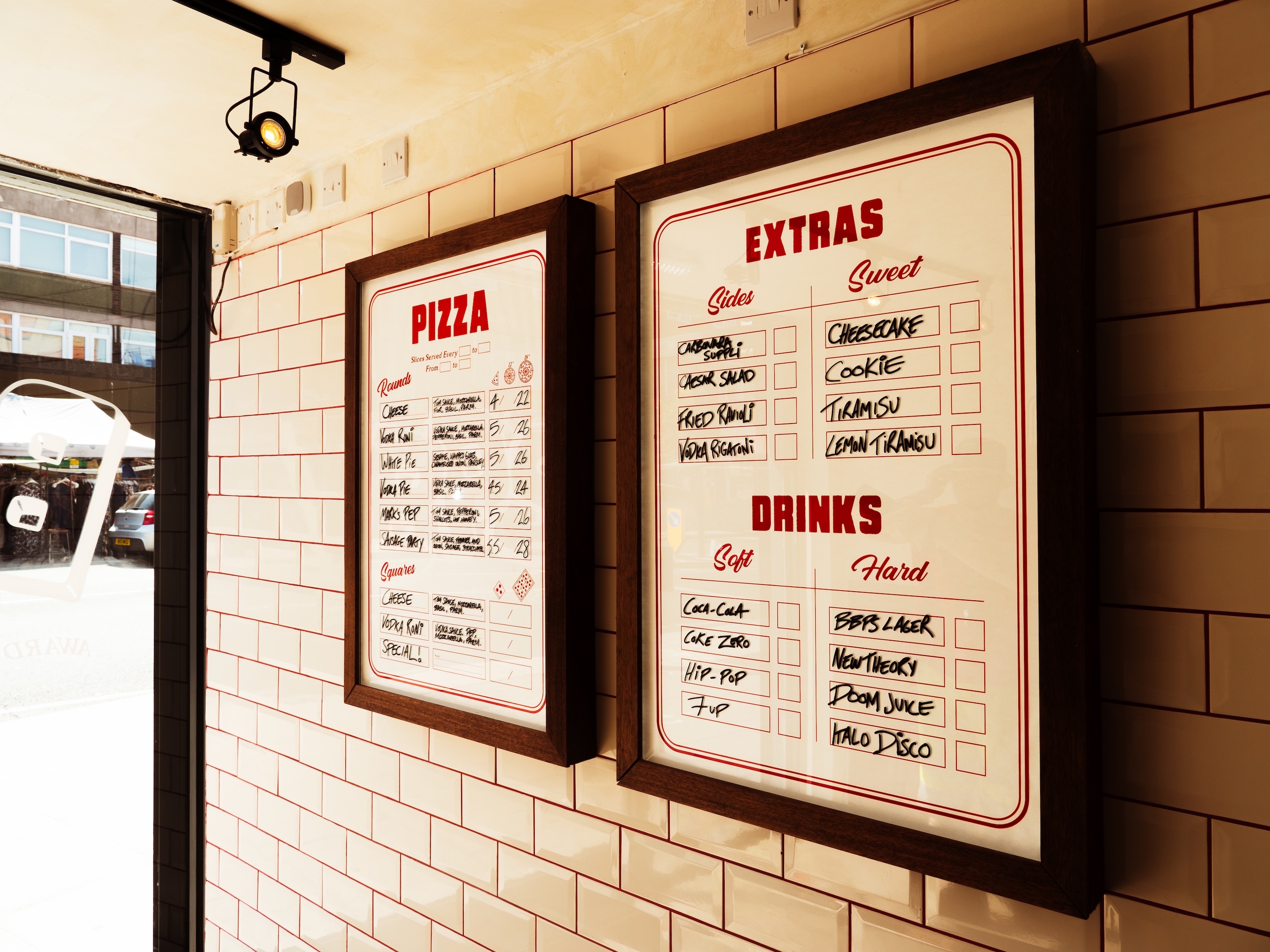
But has the time come to revive the style of Anglo-Italian pizzeria that many British operators have moved away from? Rachel Jones had been running Ace Pizza as a pop-up since 2018 before opening a permanent restaurant in Victoria Park, with a design scheme inspired by her childhood.
‘Growing up in 1980s Birmingham, I remember the family-run British pizza joints – wooden panelling, deep-red tones, warm low lighting. They were always our go-to for birthdays and family celebrations, and they left a big impression on me. A lot of places in London now lean heavily into the NYC slice-shop look, but I wanted to create something more relevant to me. I worked with Jo at Hunter’s Daughter on the interior, and we leaned into what we called ‘80s British Italian party’ – fun, a bit cheeky, inviting.’

The cooking feels Anglo-Italian, too, and has been dubbed ‘London-style pizza’. How would Jones define that? ‘I think London-style pizza is a hybrid of lots of different styles, and there are lots of variations within that. It’s a confident blend of influences rather than a strict adherence to any single tradition. There’s a bit of New York, a bit of Neapolitan, some Roman influences, but it’s ultimately defined by creativity and adaptability – much like London itself.’
The creative confidence characterising London’s vibrant pizza scene hasn’t gone unnoticed internationally. Del Guercio reports that Anthony Falco, the former chef of legendary Brooklyn restaurant Roberta’s, turned pizza consultant, recently researched London for a book on undiscovered pizza cities. American operators are showing interest, too. ‘There’s talk of some big New York names coming over to London, and that only happens when they know they can make enough money.’
Del Guercio's assessment reflects a city-wide pizza scene transformed. ‘London is going to become one of the big pizza powerhouses,’ he says. ‘People are really excited about it.’ No wonder hungry Londoners aren’t the only ones queuing up for a slice of the action.
Discover our guide to London’s pizza renaissance below.
Ben McCormack is a London-based restaurant journalist with over 25 years’ experience of writing. He has been the restaurant expert for Telegraph Luxury since 2013, for which he was shortlisted in the Restaurant Writer category at the Fortnum & Mason Food and Drink Awards. He is a regular contributor to the Evening Standard, Food and Travel and Decanter. He lives in west London with his partner and lockdown cockapoo.
-
 Curvilinear futurism meets subtropical beaches at Not A Hotel’s ZHA-designed Okinawa retreat
Curvilinear futurism meets subtropical beaches at Not A Hotel’s ZHA-designed Okinawa retreatZaha Hadid Architects has revealed the design for the first property in Not A Hotel’s futuristic new Vertex collection, coming soon to southern Japan
-
 Gorden Wagener leaves the helm of Mercedes-Benz design after 28 years with the company
Gorden Wagener leaves the helm of Mercedes-Benz design after 28 years with the companyThe German designer is stepping down from the role of chief design officer at Mercedes-Benz. We look back at his influence and impact on the world of automotive and luxury design
-
 These Christmas cards sent by 20th-century architects tell their own stories
These Christmas cards sent by 20th-century architects tell their own storiesHandcrafted holiday greetings reveal the personal side of architecture and design legends such as Charles and Ray Eames, Frank Lloyd Wright and Ludwig Mies van der Rohe
-
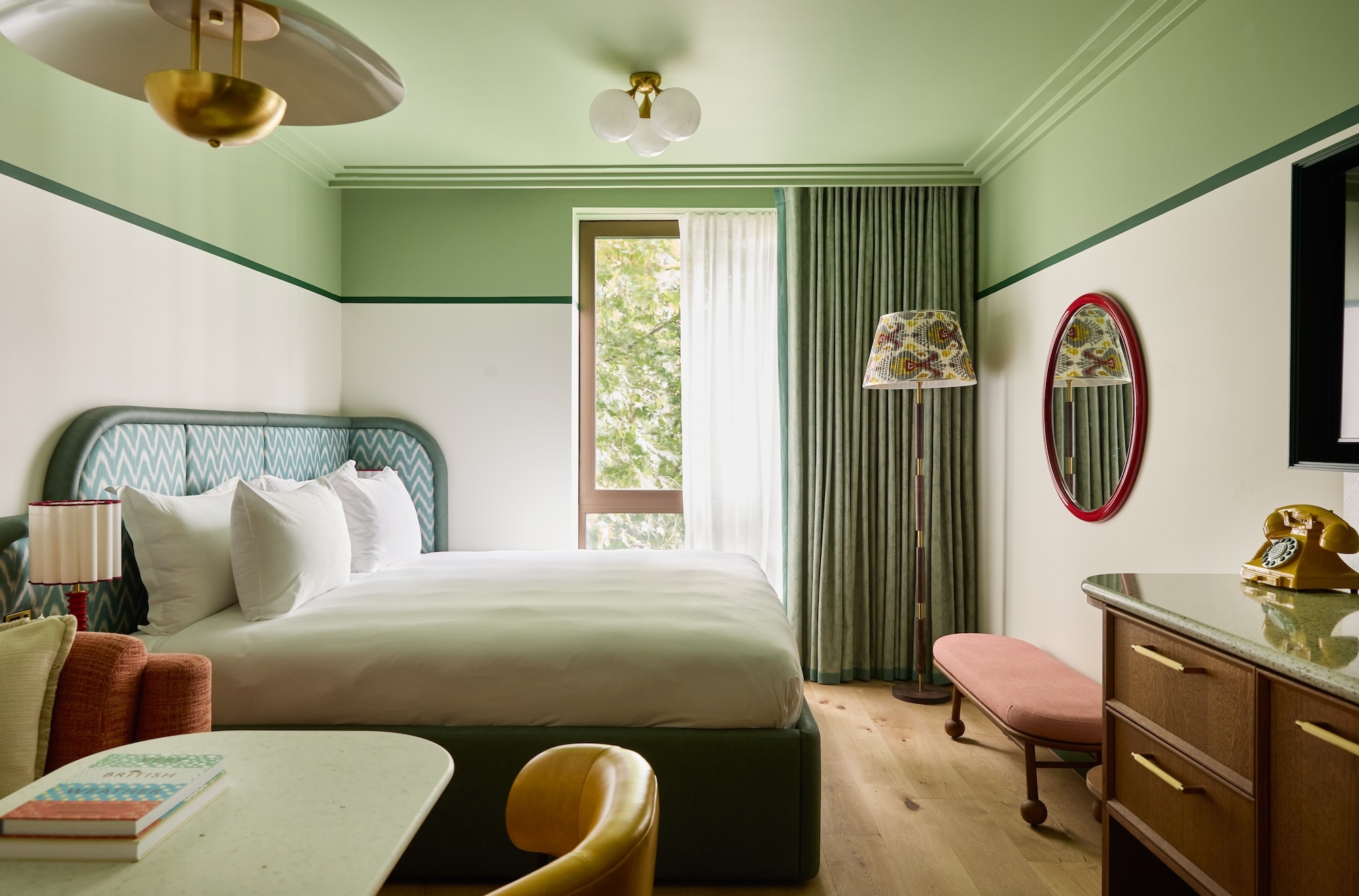 At last: a London hotel that’s great for groups and extended stays
At last: a London hotel that’s great for groups and extended staysThe July London Victoria, a new aparthotel concept just steps away from one of the city's busiest rail stations, is perfect for weekends and long-term visits alike
-
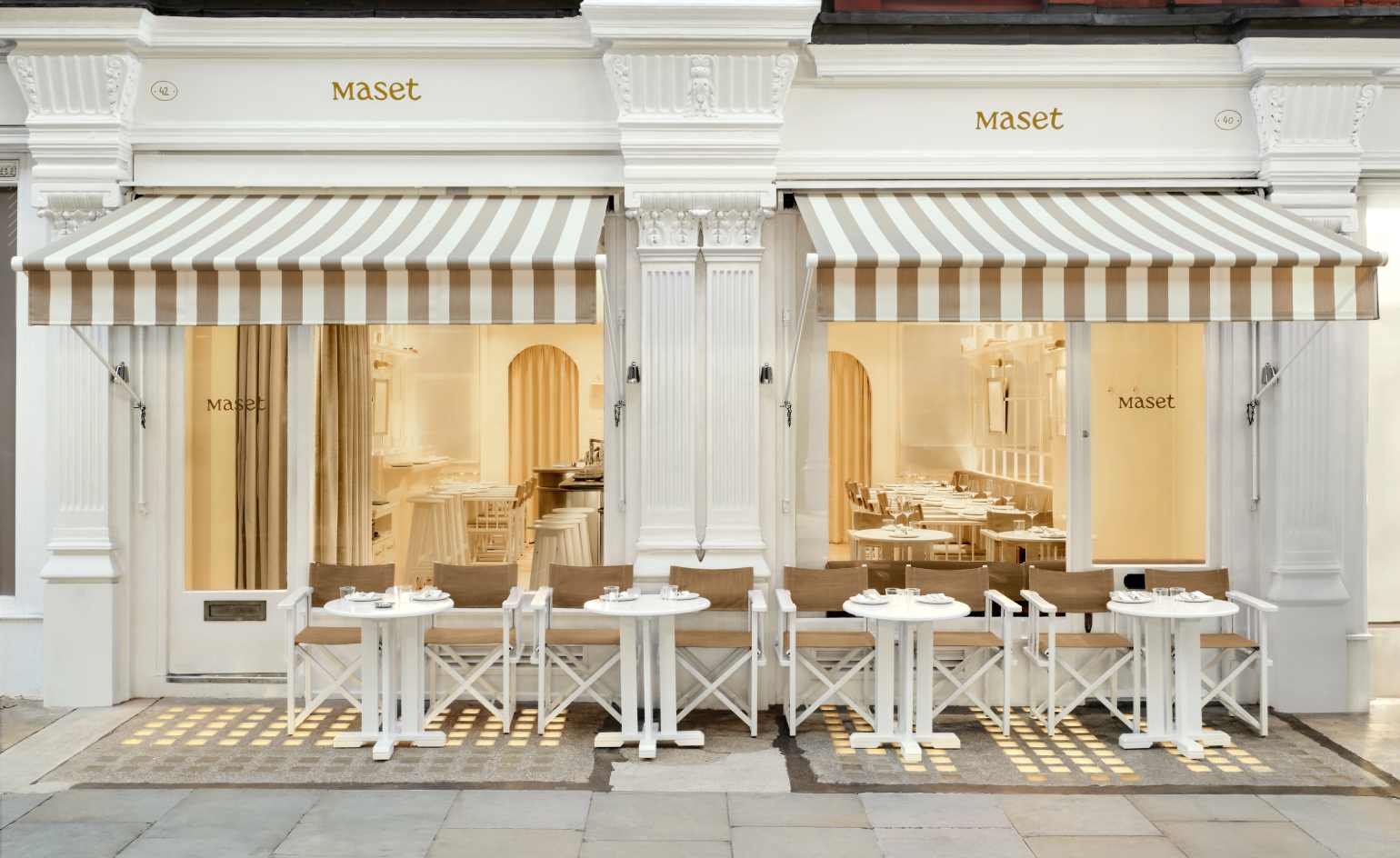 French bistro restaurant Maset channels the ease of the Mediterranean in London
French bistro restaurant Maset channels the ease of the Mediterranean in LondonThis Marylebone restaurant is shaped by the coastal flavours, materials and rhythms of southern France
-
 Sir Devonshire Square is a new kind of hotel for the City of London
Sir Devonshire Square is a new kind of hotel for the City of LondonA Dutch hospitality group makes its London debut with a design-forward hotel offering a lighter, more playful take on the City’s usual formality
-
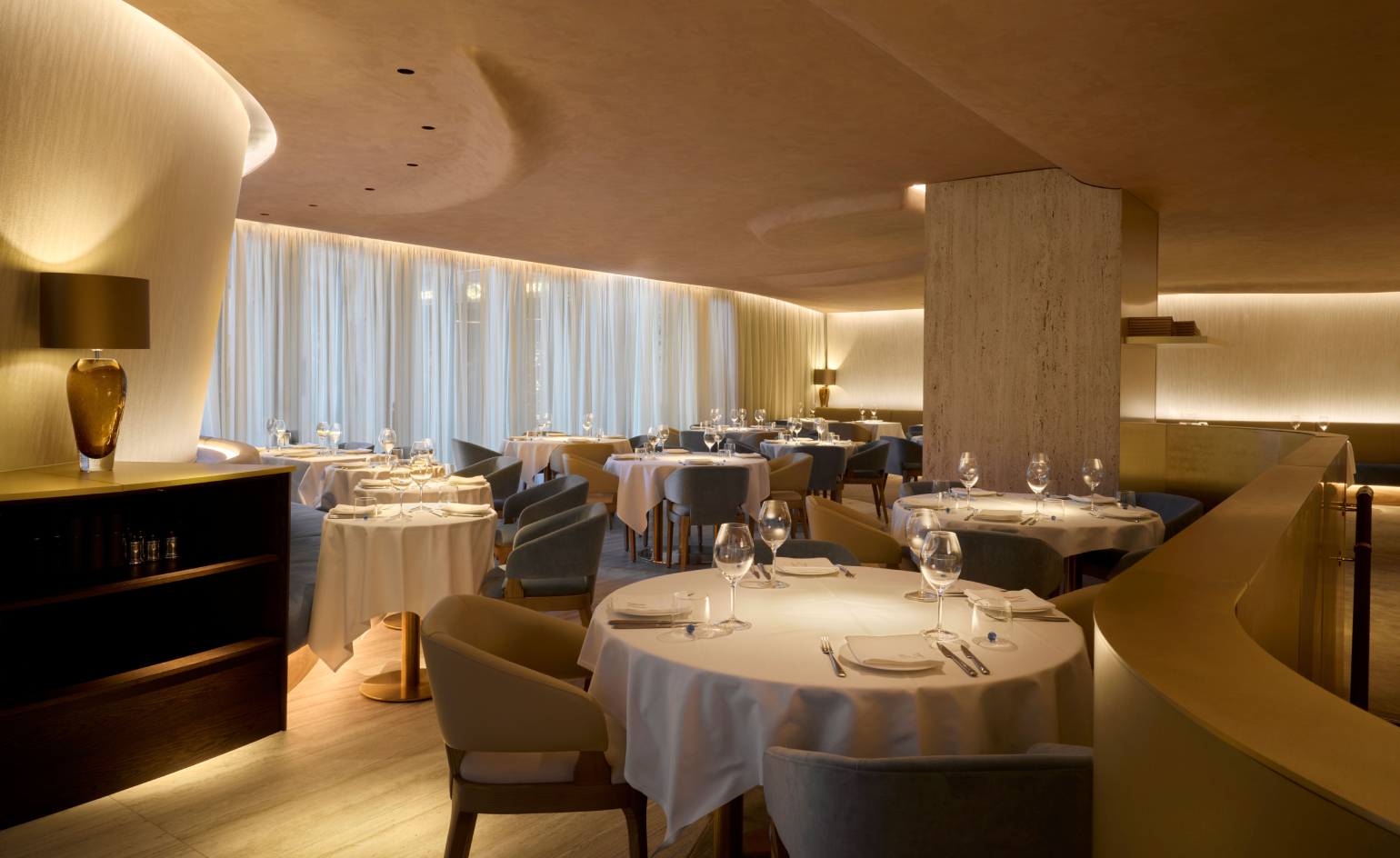 This sculptural London seafood restaurant was shaped by ‘the emotions of the sea’
This sculptural London seafood restaurant was shaped by ‘the emotions of the sea’In Hanover Square, Mazarine pairs a bold, pearlescent interior with modern coastal cuisine led by ‘bistronomy’ pioneer chef Thierry Laborde
-
 Montcalm Mayfair opens a new chapter for a once-overlooked London hotel
Montcalm Mayfair opens a new chapter for a once-overlooked London hotelA thoughtful reinvention brings craftsmanship, character and an unexpected sense of warmth to a London hotel that was never previously on the radar
-
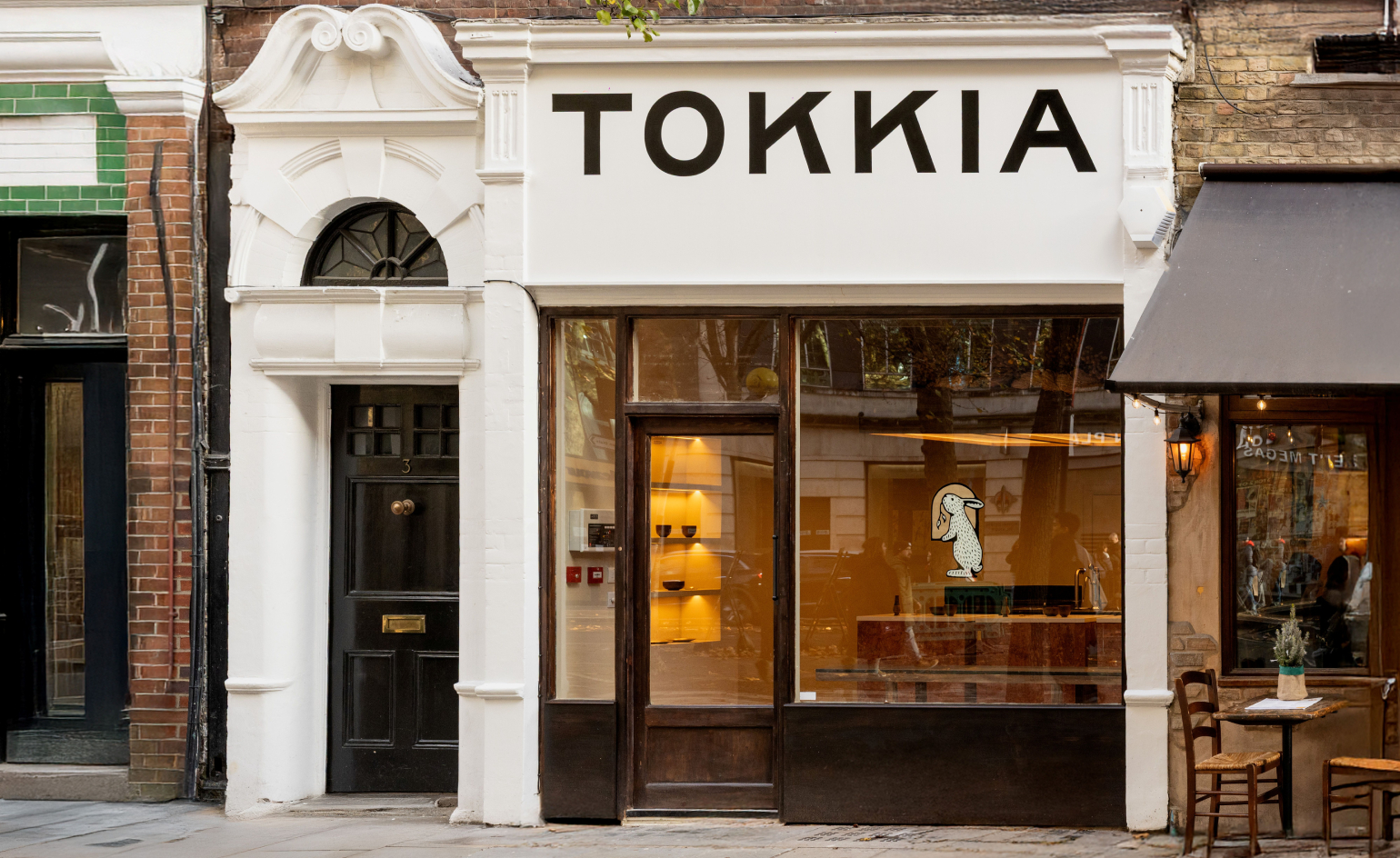 Follow the white rabbit to London’s first Korean matcha house
Follow the white rabbit to London’s first Korean matcha houseTokkia, which translates to ‘Hey bunny’ in Korean, was designed by Stephenson-Edwards studio to feel like a modern burrow. Take a look inside
-
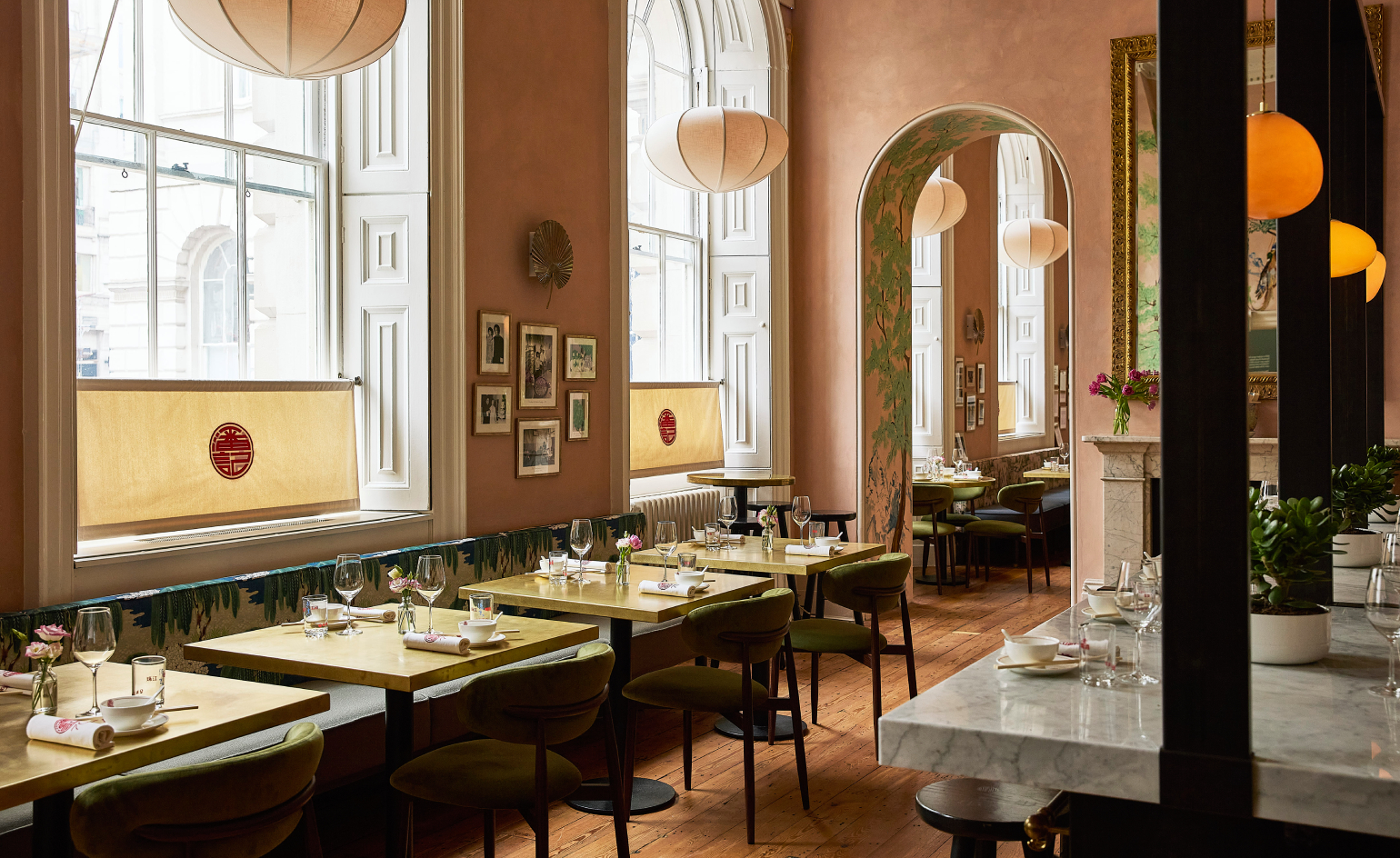 Poon’s returns in majestic form at Somerset House
Poon’s returns in majestic form at Somerset HouseHome-style Chinese cooking refined through generations of the Poon family craft
-
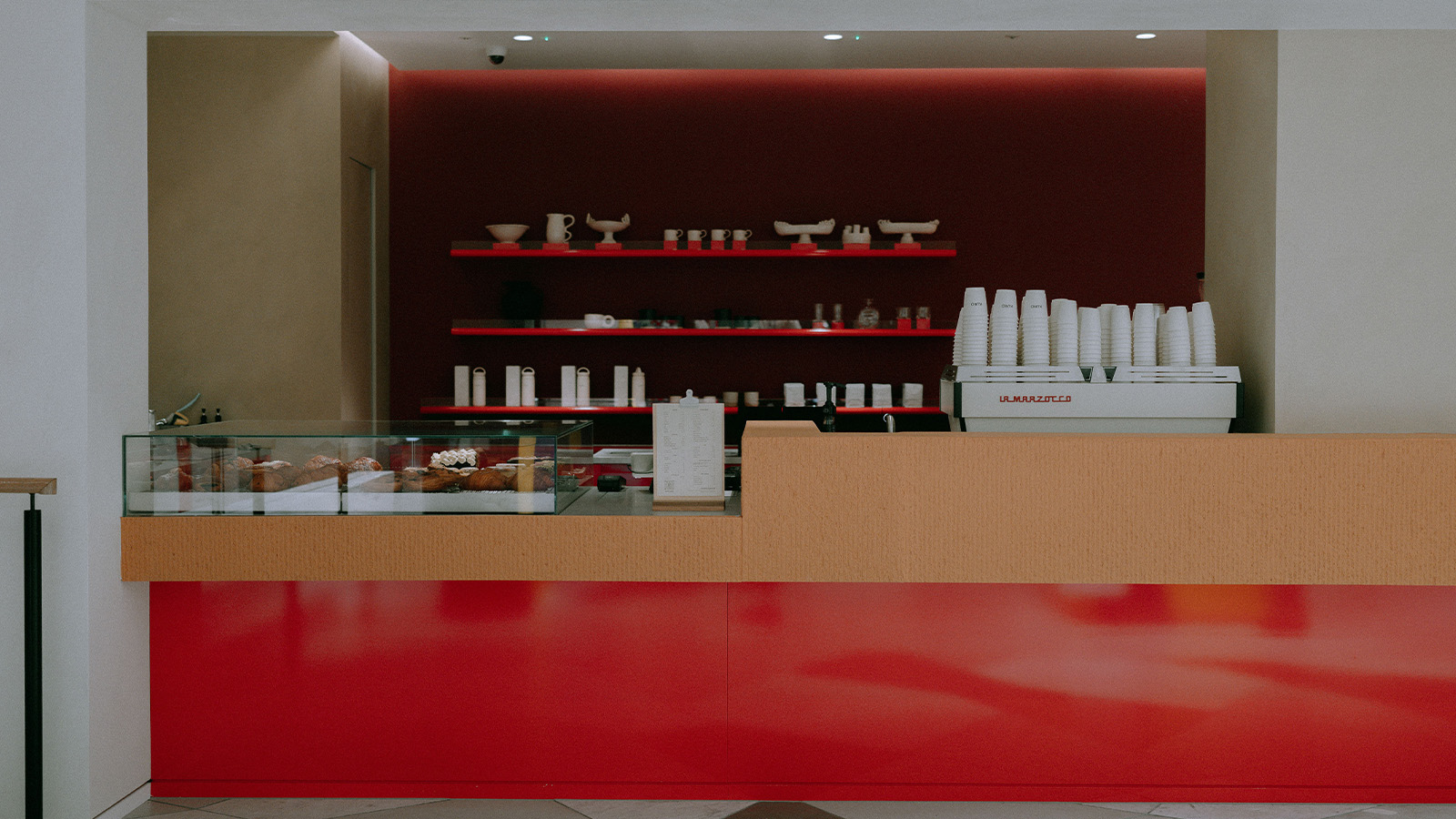 One of London’s favourite coffee shops just opened in Harvey Nichols
One of London’s favourite coffee shops just opened in Harvey NicholsKuro Coffee’s latest outpost brings its Japanese-inspired design to the London department store